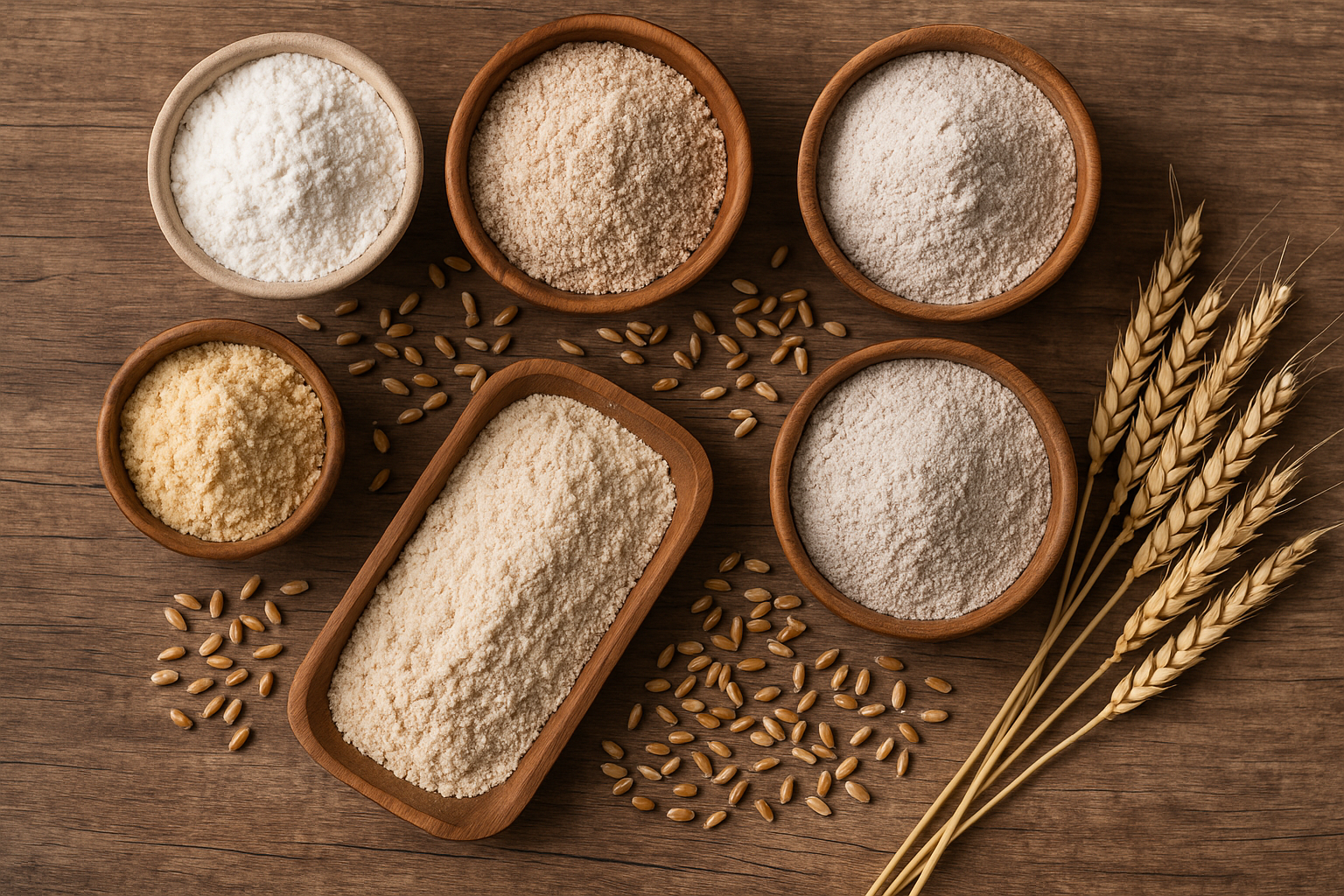Baking bread at home is one of the most rewarding experiences in the world of fermentation. But when it comes to choosing flour, it can get confusing fast. White flour, whole wheat, bread flour, rye, spelt… and what about “all-purpose”?
In this article, we’ll go over the most common types of flour for bread baking, what makes each one unique, and how they affect your final loaf.
🌾 What Is Flour?
Flour is simply a powder made by grinding grains, seeds, or legumes. For bread, the most common type is wheat flour, but it’s definitely not the only option.
What matters most in bread baking is:
- Gluten content (the protein that forms the structure and traps fermentation gases).
- Milling type (fine or coarse).
- Refinement level (whole grain or refined).
⚙️ Most Common Flours for Bread
1. White wheat flour (refined)
- Very common in baking.
- Good gluten content.
- Produces soft, fluffy loaves and is easy to handle.
- Has less fiber and nutrients due to processing.
2. Whole wheat flour
- Uses the entire grain: endosperm, germ, and bran.
- Richer in flavor, fiber, and nutrients.
- Makes denser breads and needs more hydration and fermentation time.
💡 Tip: mixing white and whole wheat flours gives you the best of both worlds.
3. Bread flour (high-protein flour)
- Higher in protein (gluten), great for long fermentations or sourdough.
- Gives strong structure and good rise.
- Often labeled as “bread flour” or “high-gluten flour.”
4. Pastry or cake flour (low-protein)
- Lower in protein, very soft.
- Not ideal for bread: doesn’t form a strong gluten network.
- Best used for cakes, cookies, and pastries.
🌾 Alternative Flours
5. Rye flour
- Low gluten but full of character.
- Traditional in dense, tangy breads from northern Europe.
- Perfect for sourdough starters—lactic acid bacteria love it.
6. Spelt flour
- An ancient grain, often easier to digest than modern wheat.
- Great flavor, slightly lower strength.
- Works well blended with wheat flour.
7. Gluten-free flours (rice, chickpea, corn, etc.)
- Don’t behave like wheat flours in fermentation.
- Require special recipes and binders (like psyllium or xanthan gum).
- Essential for gluten-free baking, but not interchangeable with wheat.
🧪 What About Gluten?
Gluten isn’t inherently “bad,” unless you have a medical reason to avoid it. In bread:
- More gluten = light, airy crumb and good rise.
- Less gluten = denser or more crumbly texture.
🥖 In Summary
- Just starting out? Use white or bread flour.
- Want more nutrition? Mix in whole wheat.
- Ready to explore? Try rye or spelt.
- Gluten-free? Use specific recipes and flours designed for that.
And remember: you don’t need the “perfect” flour to bake great bread. It’s all about experimenting, learning, and enjoying the process.
